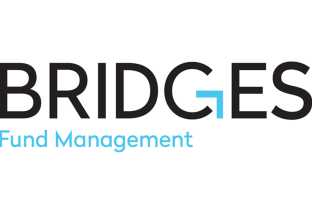For Danika Manso-Brown (HGSE ’18), the life of an activist was one she was born into and one she has made her own. “My parents met organizing a labor union, so the work of creating justice and thinking about humanity was a central part of my upbringing and home education,” said Manso-Brown. “I was taught that living in this world means you have a social responsibility for thinking about how you create more joy for people in this world.” After graduating from Duke University with a dual major in Dance and Sociology, and from Harvard Graduate School of Education with an EdM in Policy and Management, today Manso-Brown is a speaker, educator, and activist artist. Her art and educational workshops challenge and encourage people to have meaningful conversations about social justice.
She has partnered with many offices throughout Harvard Business School and here offers her expertise, insights, and recommendations for action steps that will guide companies in creating anti-racist cultures within their organizations.
STRATEGIES FOR BEING ACTIVELY ANTI-RACIST
Manso-Brown’s anti-racism workshops offer three key elements for creating a roadmap that helps individuals learn how to be actively anti-racist and bring about change within their organization.
Learn the History
“My work is grounded in history,” she said. “We need to be able to trace the roots of racism back through time. It is harder to undo how we think about identities without first knowing how they were established.” Manso-Brown encourages others to seek out historical context as a critical foundation of anti-racism work. “We’re not talking about things that happened that long ago either,” she said. “MLK would be the same age as Barbara Walters if he was still alive. My grandfather could not vote until his 30s. The history I’m asking folks to seek out is a history that unfolded on top of people who are still alive.”
Be Intentional with Language
Another key focus of Manso-Brown’s work is being intentional about language. “Language creates worlds and we need to be as intentional and accurate as possible. That includes how we refer to people.” For example, Manso-Brown noted the importance of rejecting the word “Caucasian,” which was language that came out of the eugenics movement, claiming descendants of the Caucasus Mountains were the superior race. “‘Caucasian’ may seem more proper or polite, but it’s the opposite,” said Manso-Brown. It’s also critical for organizations to think about the language they use when bringing others into the work of anti-racism. Manso-Brown suggests several sentences that can empower people to interrupt language that reinforces racism in conversations with families, friend groups, and in the workplace:
- “What did you mean by that?”
- “What you just said feeds into a really old stereotype. Can we talk about that?”
- “That thing you said reinforces the system of racism. I want to talk about why."
“Use words that focus on what someone said or did, not who they are,” she said.
Consider Your Identities
Manso-Brown also encourages her participants to think about their various identities, which of those identities holds privilege, and which of those identities are marginalized. “Every ‘-ism’ (racism, ableism, sexism, Anti-Semitism, etc.) promotes one group having privilege and other folks being pushed away,” she said. To tackle these issues, we need to consider how to use our privilege and be prepared to give up our privilege in order to truly create equality.
PROMOTING ANTI-RACISM WITHIN YOUR ORGANIZATION
Racism in the workplace is more complex than one colleague being unkind to another. As Manso-Brown explains, “Racism is around us all the time without us doing anything. It is a system created for economic, political, and social reasons that privileges white folks and marginalizes people of color.” It’s important to understand that racism is a system and that individuals and organizations need to tackle the issue systematically and intentionally. In the workplace, she recommends the following actionable steps forward:
Have Consistent Conversations About Anti-Racism
Conversations around anti-racism need to be happening in the workplace, on a regular basis, and together as a group. “Start meeting and keep meeting about anti-racism practices in your organizations,” Manso-Brown said. “Setting aside time every other week or once a month to engage as a group with the same materials, learn, and discuss is a central part of this work.”
Audit Your Policies
“Do an audit of your policies and assess if policies are reinforcing the marginalization of any group,” Manso-Brown said. This may include dress codes, lack of pay equity, or hiring practices that favor one group over another. Policies can also be related to how decisions are made and how team members communicate with one another. Evaluate how your meetings allow different opinions or feelings to be voiced and whether or not some people may feel unable to speak up, then take action to create safe and welcoming spaces. Encouraging diversity cannot stop with hiring because “organizations need to create environments where people can show up with the full humanity recognized every single day,” said Manso-Brown. Without this important aspect of organizational policy and culture, adjusting hiring practices will not make meaningful change.
Create Metrics and Hold Your Organization Accountable
Every organization has business goals and metrics. Diversity, equity, and inclusion should be included in those key goals and as such should be attached to metrics that define success. “It’s not enough to say ‘we are committed to anti-racism,’” Manso-Brown said, “you have to be about it. That means clear numbers, clear benchmarks, and clear metrics.”
Set the Tone as Leaders
Anti-racism work needs to happen at all levels of an organization, but the tone should be set from the top. Leaders need to take an active role in both acknowledging where they have fallen short and visibly doing the work to improve. “We get held up by defensiveness. Instead, we should humble ourselves and recognize what we have to learn and understand that we will continue to make mistakes,” said Manso-Brown.
Understand the Value
“Diversity has been proven to improve organizational effectiveness, but it’s more than that,” Manso-Brown said. “I want people to come at this work from an ethical and moral calling.” When an organization makes the commitment to be anti-racist, it creates a culture that values the collective and individual humanity of its employees. These are organizations that empower and support individuals, and organizations that leaders can be proud to helm.
Danika Manso-Brown is the founder of Manso Brown Group, an equity and inclusion education consultancy, and co-founder of Spoken Verb, a collaborative arts performance group dedicated to social justice.





.png&w=80&h=80)

